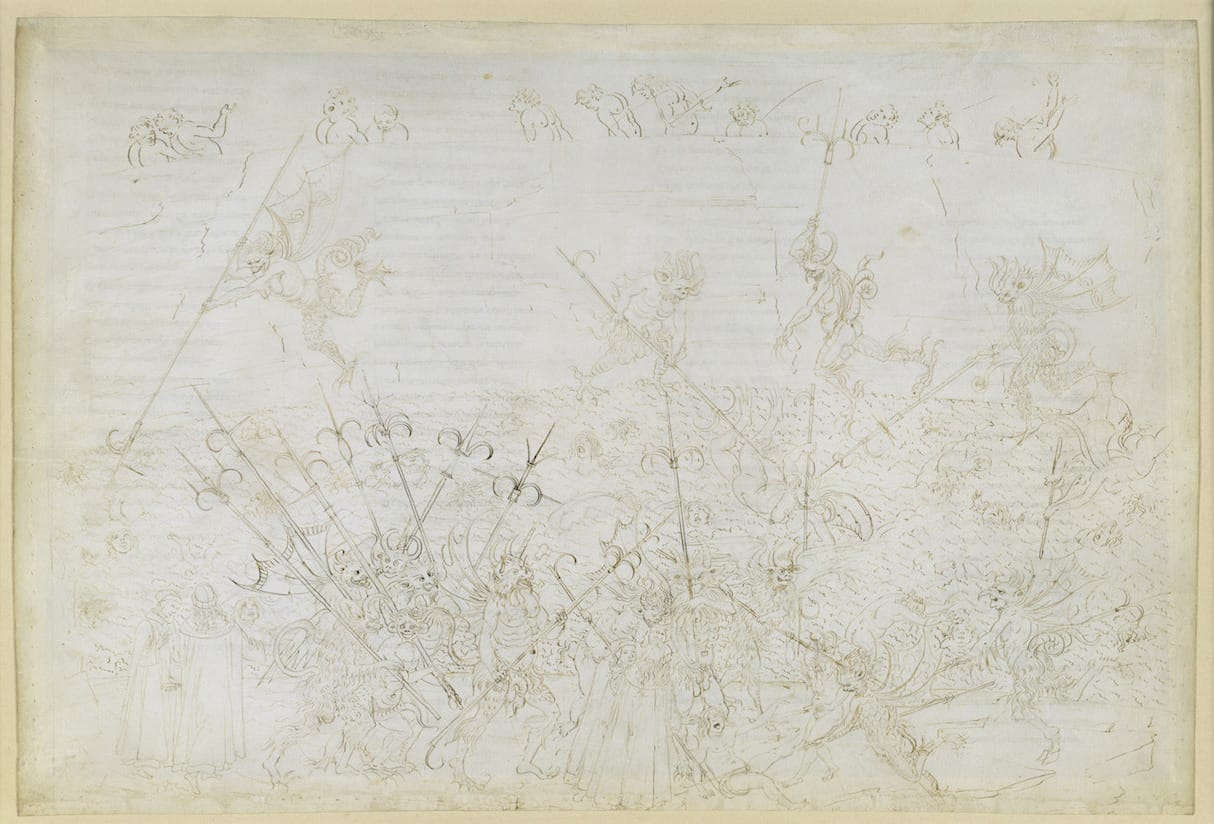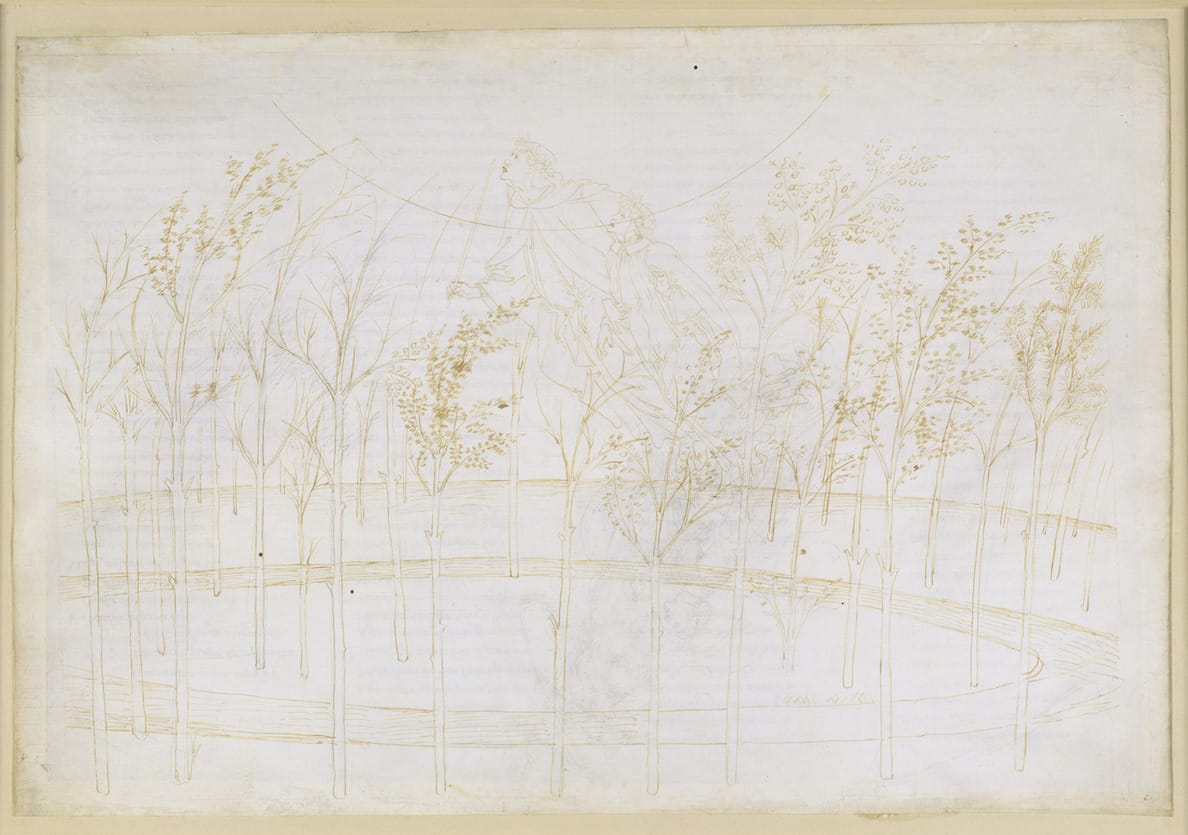Botticelli’s Hallucinatory ‘Divine Comedy’ Drawings Return to England After 130 Years
Lucifer gobbles up the souls of three traitors in an icy inferno, sinners are cooked in baths of tar, and a gauzy-robed Beatrice floats in the heavens.

Lucifer gobbles up the souls of three traitors in an icy inferno, sinners are cooked in baths of tar, and a gauzy-robed Beatrice floats in the heavens. These are some of the hallucinatory scenes in Sandro Botticelli’s drawings for the epic poem The Divine Comedy, charting Dante Alighieri’s imaginary journey through Hell, Purgatory, and Paradise. Dating from 1480–95, these drawings on vellum are considered some of the Renaissance era’s most exquisite and are rarely exhibited or lent.
In Botticelli and Treasures from the Hamilton Collection, an exhibit at London’s Courtauld Gallery, 30 of these Divine Comedy drawings are being shown in the UK for the first time in 134 years. “They are like a graphic novel,” Dagmar Korbacher, the exhibition’s curator, told the Guardian. “It is not only a horrifying story, it is a story of life and humanity … there are so many different things to be discovered.”

The story of the drawings’ provenance is a dramatic one, as far as provenance stories go. The Botticelli drawings were first acquired by the 10th Duke of Hamilton, a respected lover of the arts who made a fortune from Scottish coalfields. But the works soon ended up in the hands of his grandson, the 12th Duke of Hamilton, a notorious gambler and ne’er-do-well (“his betting book is usually a sorry sight on settling day,” it was often said). In 1882, to pay off his enormous debts, the 12th Duke sold Dante’s drawings, along with nearly 700 other rare antique art objects in his inherited collection, to the Kupferstichkabinett Museum in Berlin.

Now, 134 years later, the Kupferstichkabinett has loaned the drawings to the Courtauld Gallery. The collection’s present return to London is a belated victory of sorts for opponents of the drawings’ 1882 sale, including Queen Victoria and the writer John Ruskin, who launched a fundraising campaign to keep these treasures in the UK. At the Courtauld Gallery, the Dante drawings are being shown alongside illuminated manuscripts from their time, including the Hamilton Bible, considered one of the world’s most important illuminated manuscripts and which can be seen gleaming in Raphael’s portrait of Pope Leo X.

Botticelli and Treasures from the Hamilton Collection continues at the Courtauld Gallery (Somerset House, Strand, London) through May 15.





